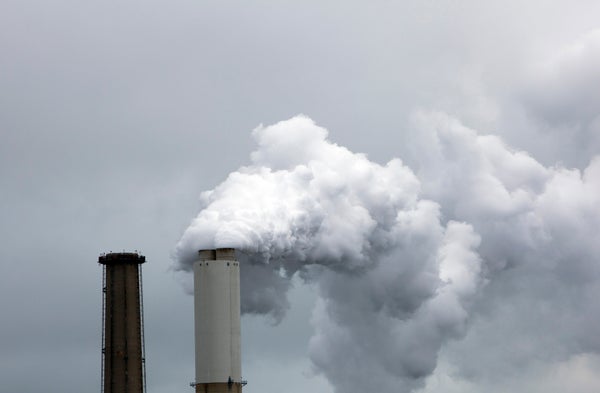One pioneering team hopes to use carbon dioxide to make a stronger form of cement. Another wants to use carbon to make bioplastic. Still another is planning to transform CO2 into solid carbonates that can be used as building materials.
The XPRIZE Foundation unveiled 10 teams yesterday as finalists in its $20 million contest to find a solution to carbon emissions.
“These teams are showing us amazing examples of carbon conversion and literally reimagining carbon. The diversity of technologies on display is an inspiring vision of a new carbon economy,” said Marcius Extavour, XPRIZE senior director of energy and resources and prize lead. “We are trying to reduce CO2 emissions by converting them into useful materials, and do so in an economically sustainable way.”
On supporting science journalism
If you're enjoying this article, consider supporting our award-winning journalism by subscribing. By purchasing a subscription you are helping to ensure the future of impactful stories about the discoveries and ideas shaping our world today.
The foundation hosts competitions to test technologies aimed at solving wider societal challenges. The California-based nonprofit is perhaps most famous for helping to launch the private space industry.
Its carbon competition is meant to find an economic use for planet-warming emissions. The basic idea: If emissions can be turned into a product, power companies will have an incentive to capture and sell carbon instead of releasing it into the atmosphere.
A group of 47 teams from across the world initially submitted proposals. The remaining 10 teams will compete in two groups. One will test their technologies at a coal-fired power plant in Gillette, Wyo. The other will compete at a natural gas plant in Calgary, Alberta. Winners will be announced in 2020. They will split the $20 million purse.
The teams will now take their technologies out of the laboratory and test them at scale.
“We know we can do it scientifically,” Extavour said. The question, he added, “is how we do it economically to scale.”
Carbon capture and utilization has drawn increased attention in recent years as a potential climate mitigation strategy. A new federal tax credit for carbon capture utilization and sequestration, or CCUS in industry jargon, has prompted a surge of interest in the sector (Greenwire, March 12).
Significant skepticism over carbon utilization’s effectiveness persists, however. The chief concern is that global carbon emissions outweigh the market for carbon products.
“There is no question you can do it. The question is whether it can be a meaningful contribution to climate mitigation,” said Edward Rubin, a professor of environmental engineering at Carnegie Mellon University.
A 2017 paper published by researchers at Imperial College London in the journal Nature Climate Change found that carbon utilization is unlikely to contribute more than 1 percent of needed greenhouse gas reductions in future years, Rubin noted.
Private financing for the CCUS is well and good, he suggested, but “if you’re advocating something that deserves major resources as a climate mitigation option, it starts to look more like a distraction in that those resources can be used in other directions.”
XPRIZE officials, for their part, said the competition has already succeeded in raising public awareness about the potential for turning emissions into economic goods.
When the competition launched two years ago, most thought of carbon capture only in the context of enhanced oil recovery. Today, the sense of possibilities is growing, Extavour said.
The finalists were announced yesterday at the Bloomberg New Energy Finance summit in New York. The Wyoming teams are:
Breathe of Bangalore India, which is producing methanol; C4X of Suzhou, China, is making chemicals and bio-composite foamed plastics; Carbon Capture Machine of Aberdeen, Scotland, is making solid carbonates that can be used in building materials; CarbonCure of Dartmouth, Nova Scotia, is producing a stronger type of concrete; and Carbon Upcycling UCLA of Los Angeles is making CO2 absorbent building materials.
The Alberta teams are:
C2CNT of Ashburn, Va., is making carbon nanotubes; Carbicrete of Montreal is producing carbon-negative concrete using waste from steel production; Carbon Upcycling Technologies of Calgary, Alberta, is making enhanced graphic nanoparticles and graphene derivatives; CERT of Toronto is producing building blocks of industrial chemicals; and Newlight Technologies of Huntington Beach, Calif., is making bioplastic.
Correction: An earlier version of this story incorrectly reported the number of teams that initially submitted proposals to XPRIZE. Also, the 10 team finalists, who were erroneously identified as semifinalists, were announced Monday.
Reprinted from Climatewire with permission from E&E News. E&E provides daily coverage of essential energy and environmental news at www.eenews.net.
